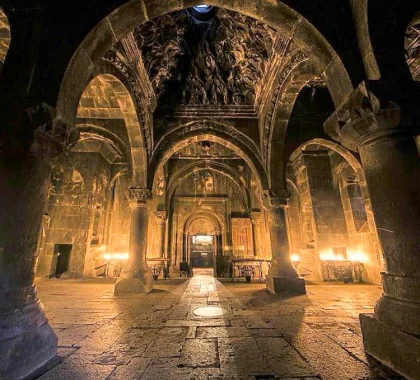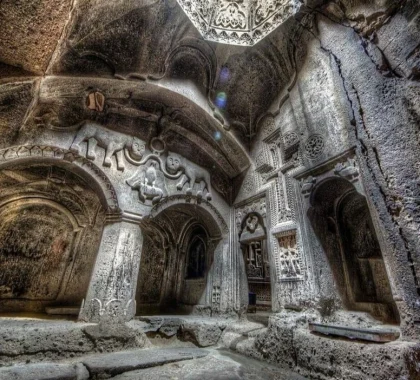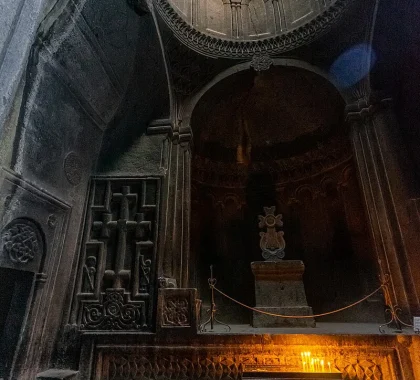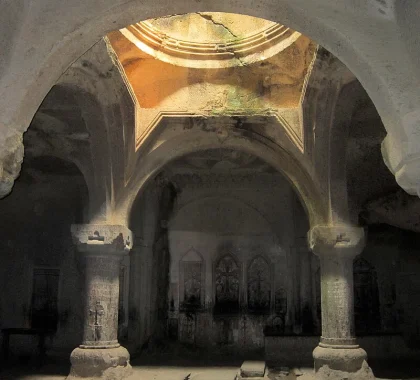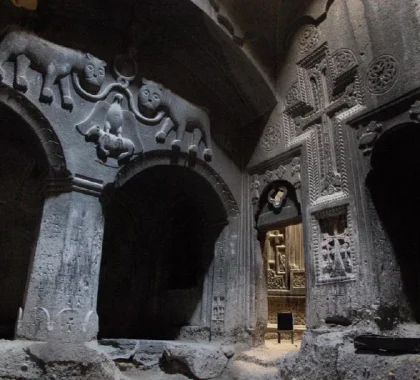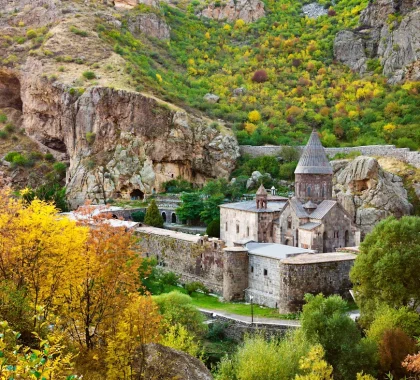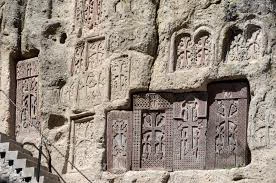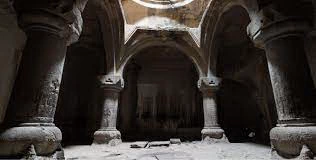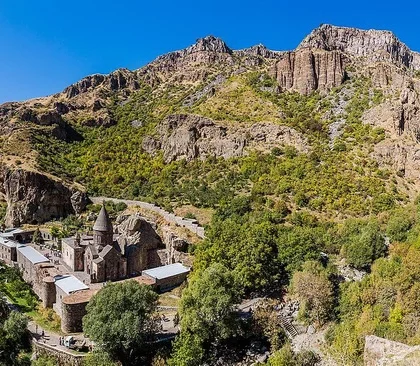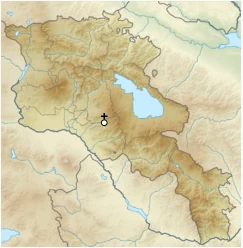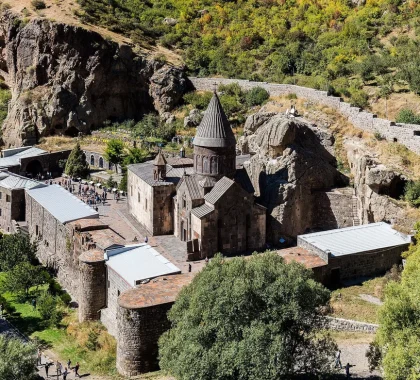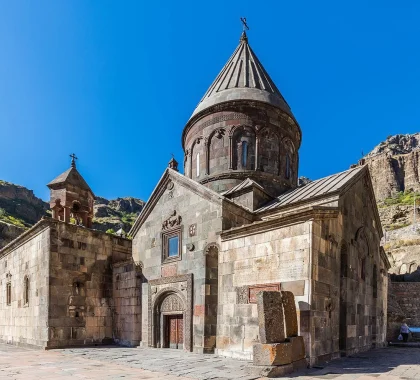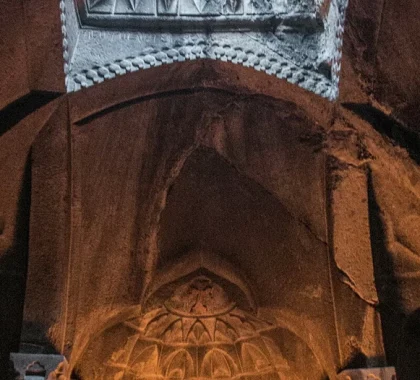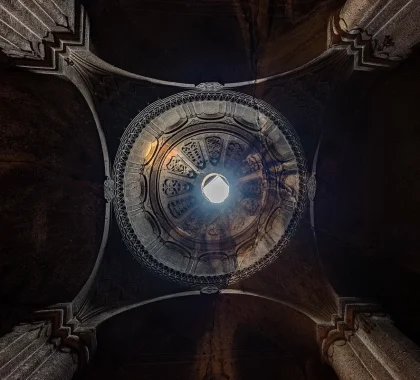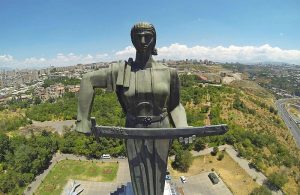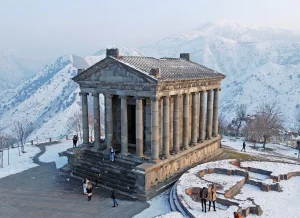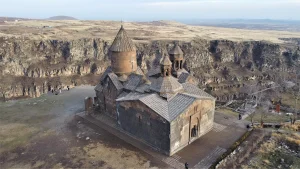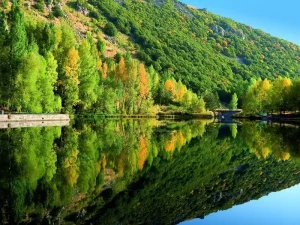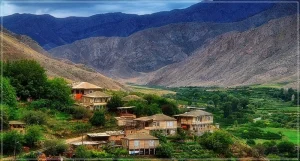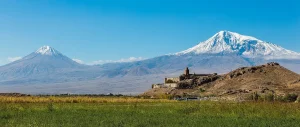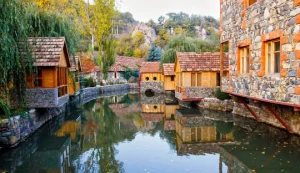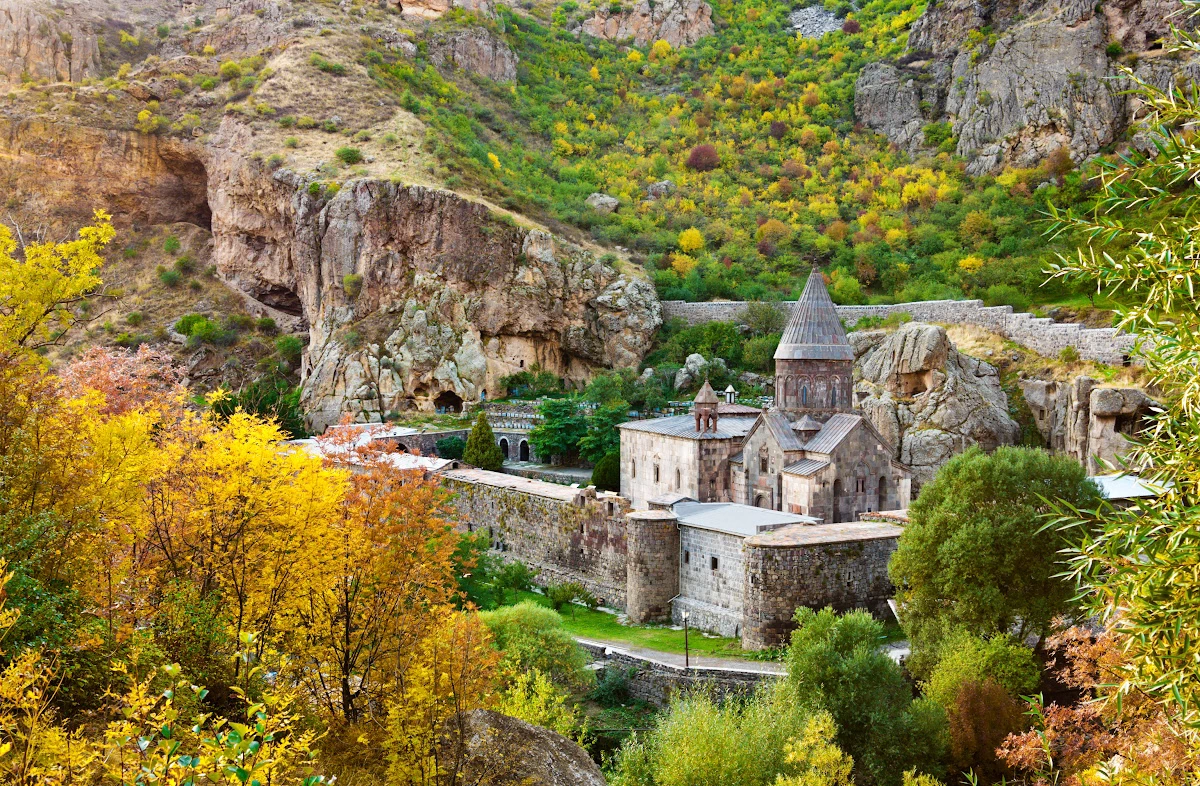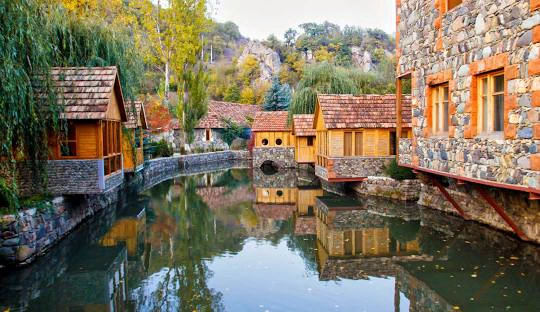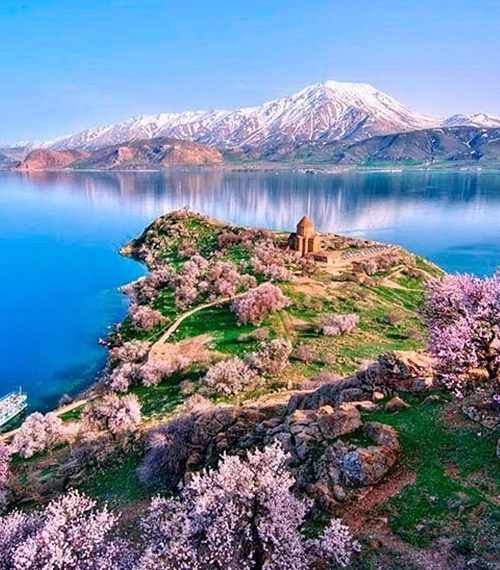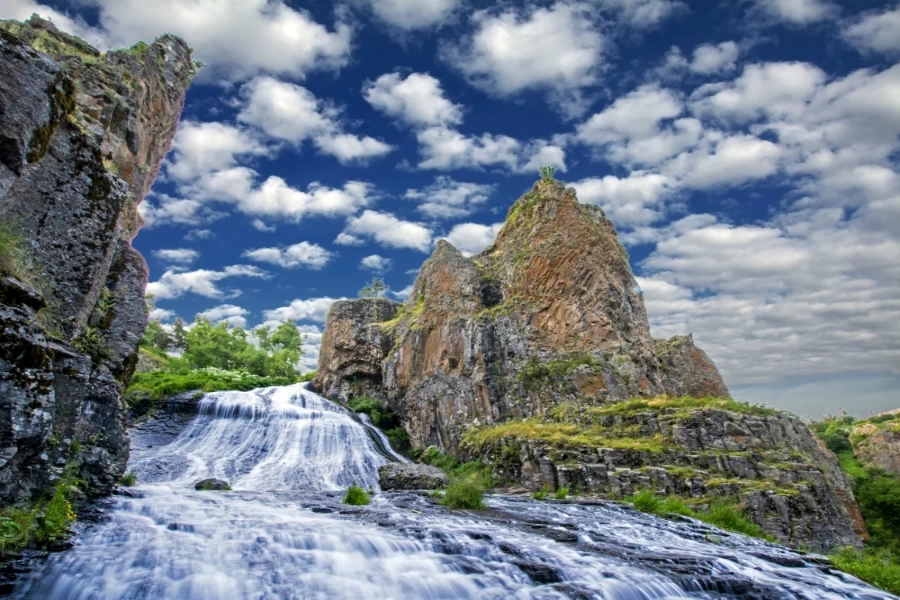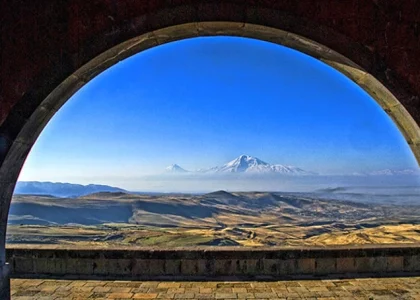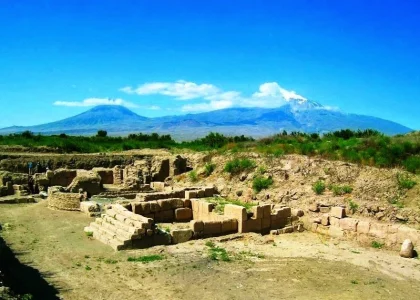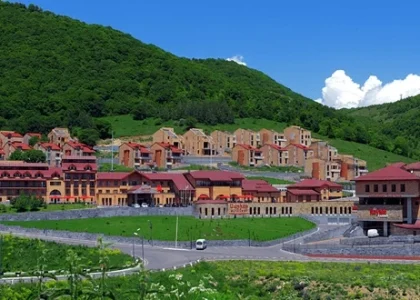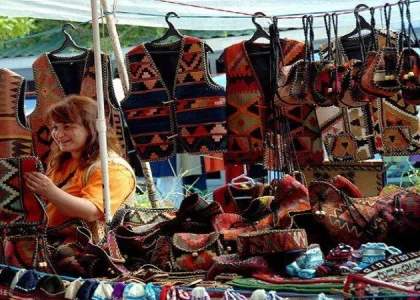Geghard Monastery is a medieval Armenian monastery located in the Kotayk Province of Armenia, renowned for being partially carved into the surrounding mountains and encircled by cliffs. It is a UNESCO World Heritage Site with enhanced protection.
History and Foundation:
Geghard Monastery was founded in the 4th century by Gregory the Illuminator at the site of a sacred spring inside a cave, originally known as “Ayrivank” meaning “Monastery of the Cave.” The main church was constructed in 1215. The name “Geghard” or “Geghardavank” translates to “Monastery of the Spear,” referring to the spear that wounded Jesus during his crucifixion, which is said to have been brought to Armenia by the apostle Judas, known here as Thaddeus. The spear is now housed in the treasury of Etchmiadzin.
Architecture and Location:
Geghard Monastery is nestled in the cliffs of the Azat River Gorge, which, along with the monastery, is included in the World Heritage Site list. The complex features churches entirely carved out of rocks, smaller cave chapels, and intricate architectural structures. The site is notable for its standalone and carved khachkars (stone crosses), making it a unique and heavily visited tourist destination in Armenia.
Nearby Sites:
Visitors to Geghard often also visit the nearby Garni Temple, situated along the Azat River. It is common to visit both sites on a single trip, often referred to together as “Garni-Geghard.”
History:
The monastery was established in the 4th century by Gregory the Illuminator at a sacred spring inside a cave. The original monastery was destroyed by Arabs in the 9th century, leaving no traces of the original “Ayrivank” structures. The monastery suffered repeated attacks from Arab leaders, including the burning of buildings and theft of valuable manuscripts. The main church was built in 1215 under the patronage of the Zakarian brothers, generals of Queen Tamar of Georgia.
Interior Architecture:
Geghard Monastery comprises a series of rock-cut structures, including the main church “Katoghike,” built in 1215. The gavit, constructed between 1215 and 1225, features four massive columns supporting a stone roof with a central opening for light. The first rock-cut church contains the sacred spring, built in the 1240s.
Relics and Symbols:
Geghard Monastery is famed for its relics, most notably the spear that wounded Christ. According to legend, the apostle Thaddeus brought this spear to the monastery, making it a prominent pilgrimage site for Armenians through the ages. In the 13th century, Prince Prosh Khaghbakian donated the monastery and transformed it into a family monastery and mausoleum.
Monastery Complex:
The monastery complex today includes the main church, caves, and khachkars. The main church “Katoghike” features a traditional design with a dome on a square base. Near the church is another rock-cut structure known as the Church of St. Gregory.
Tourism and Culture:
Geghard Monastery attracts numerous tourists, with locals selling sweet bread, dried fruits, and souvenirs to visitors. The site is a major pilgrimage destination and hosts various cultural and religious events.
Geghard Monastery combines rich history and unique architecture, making it one of Armenia’s most important tourist and religious landmarks.
